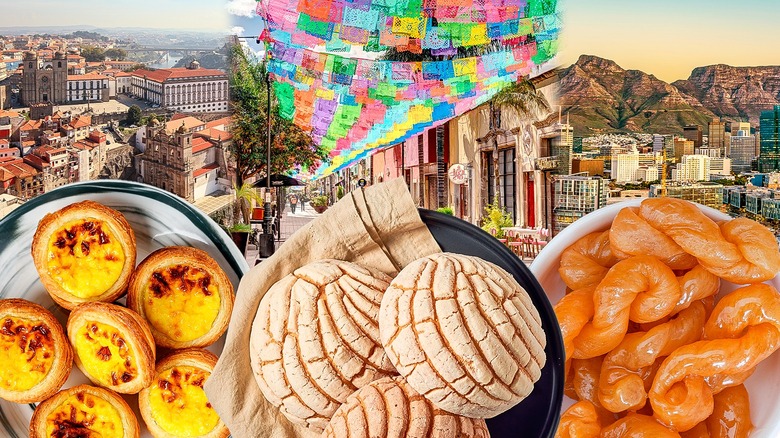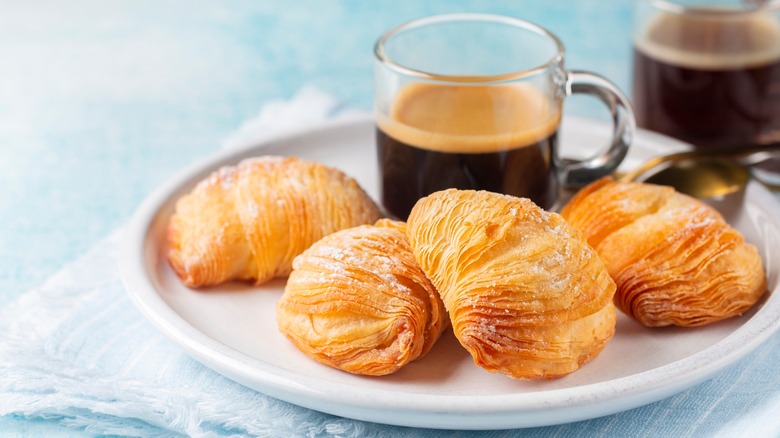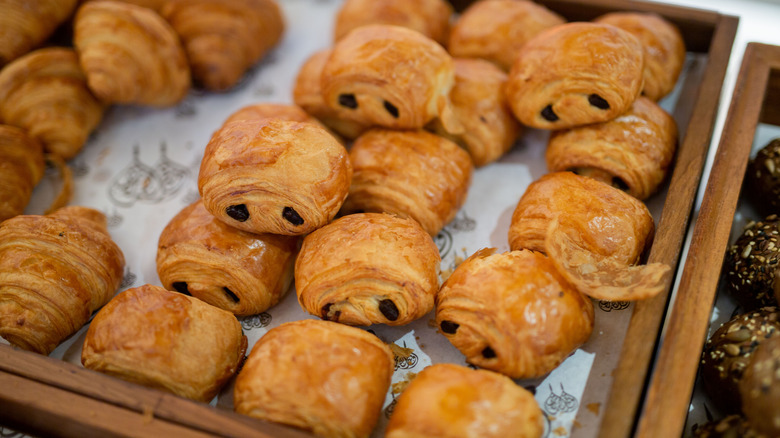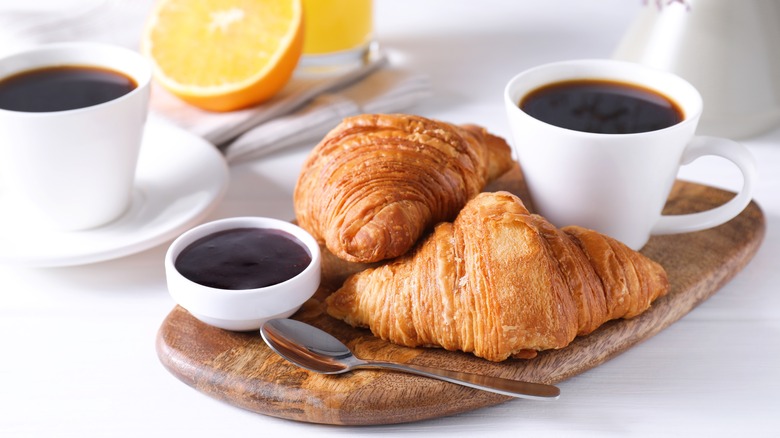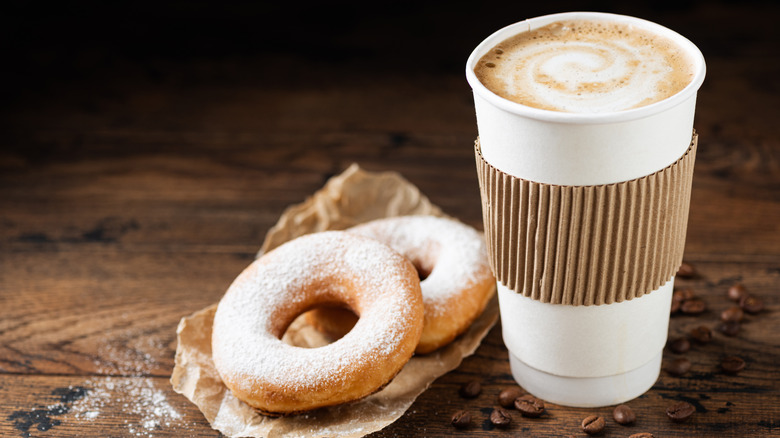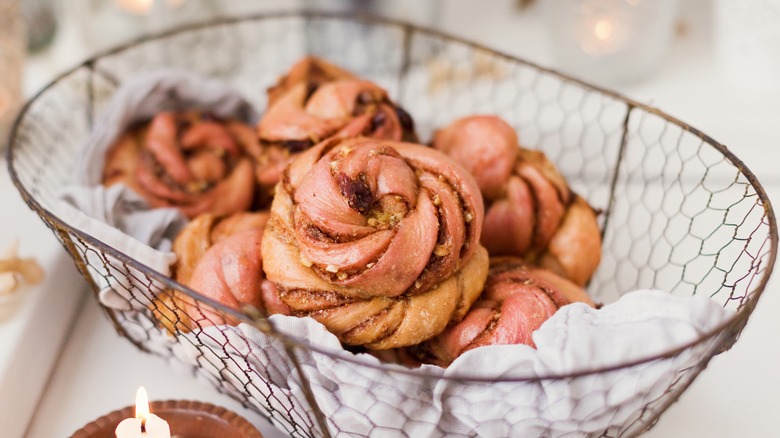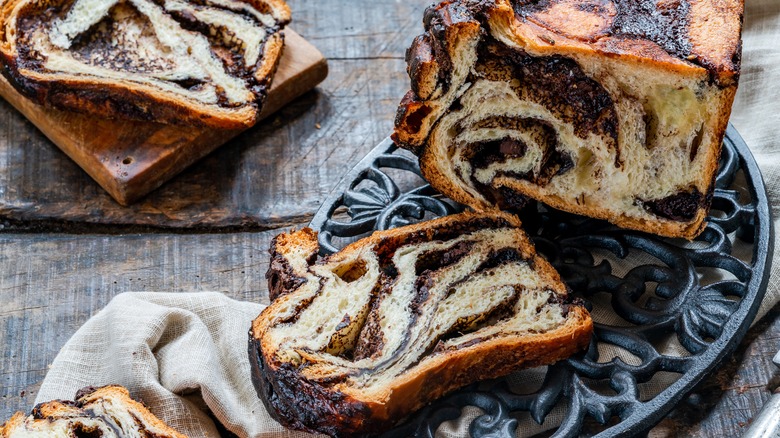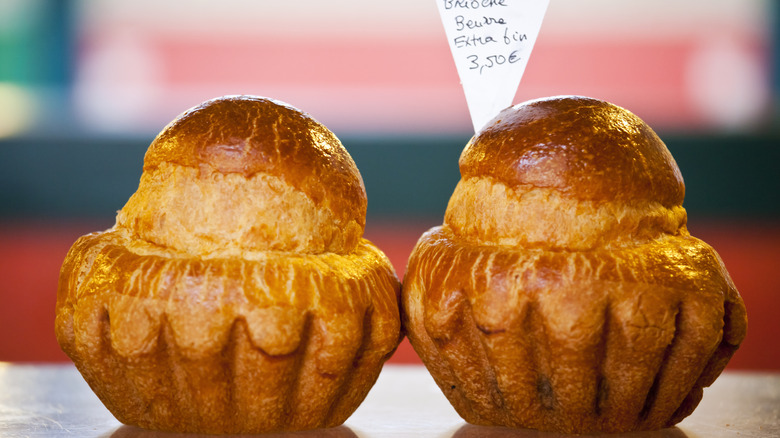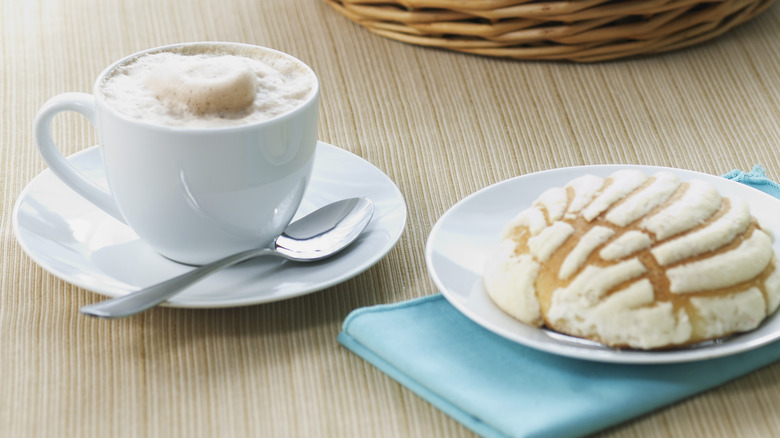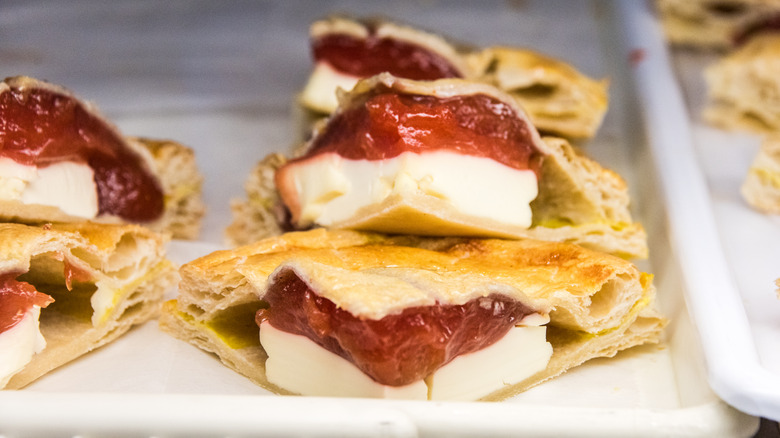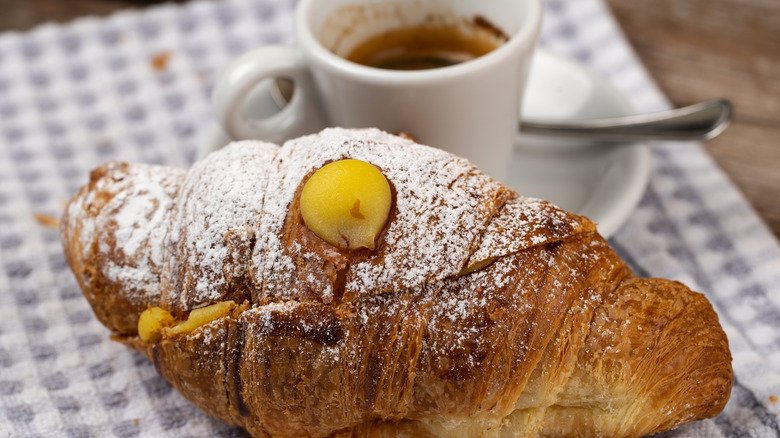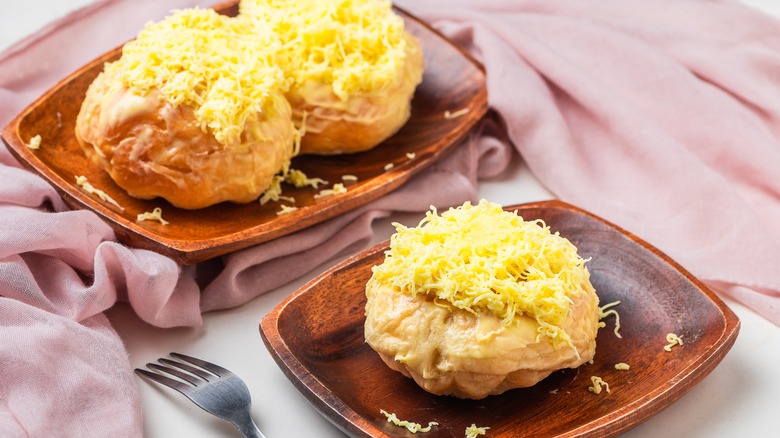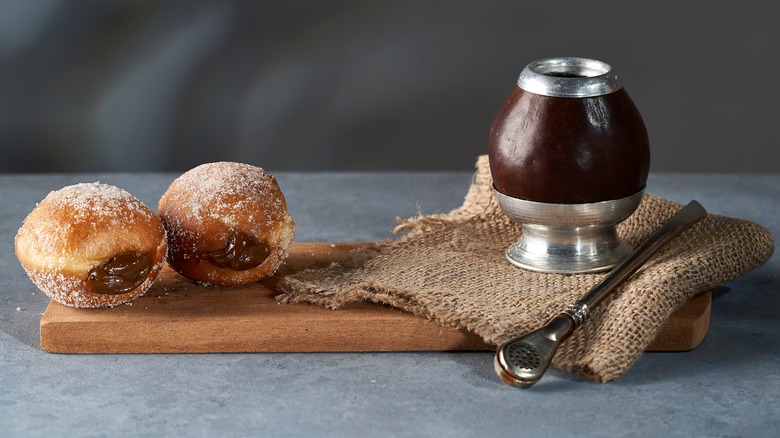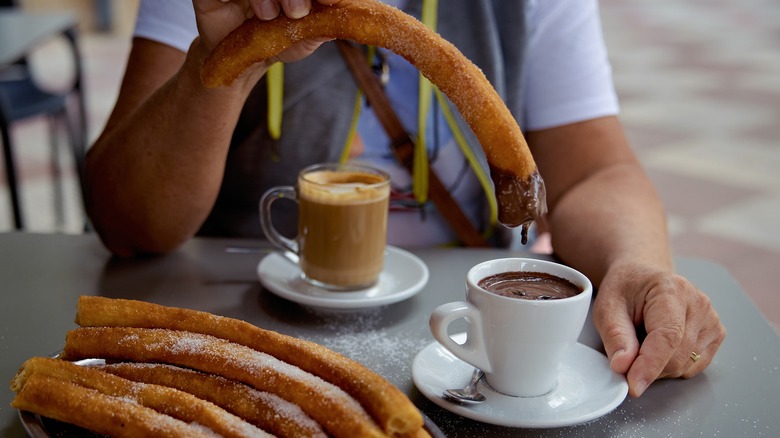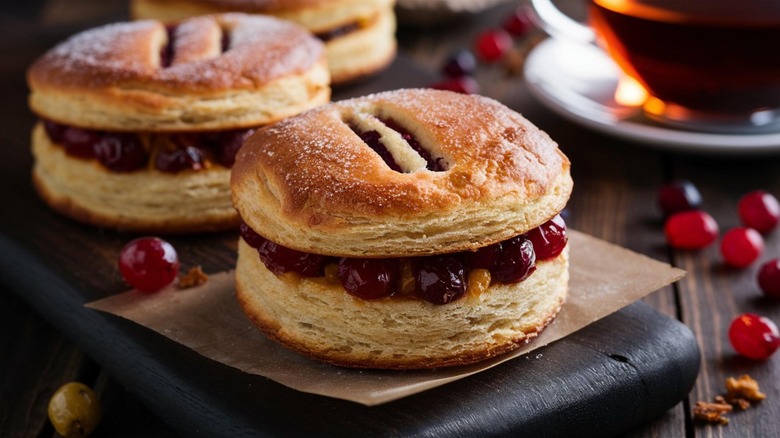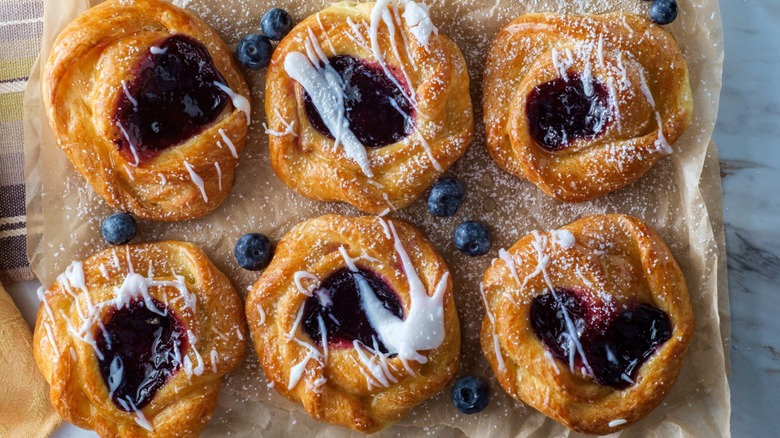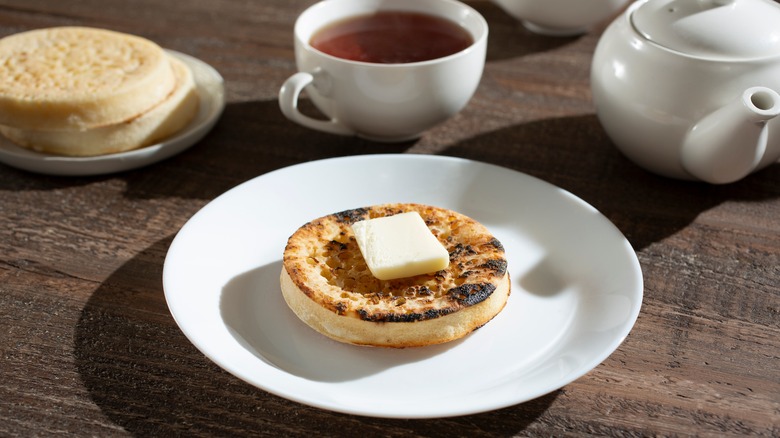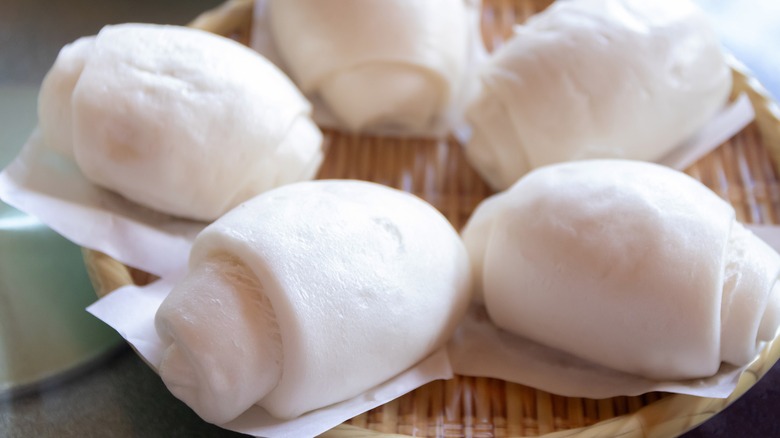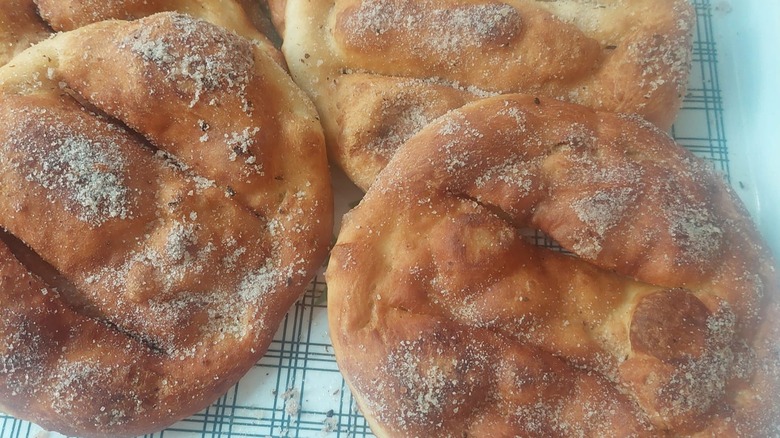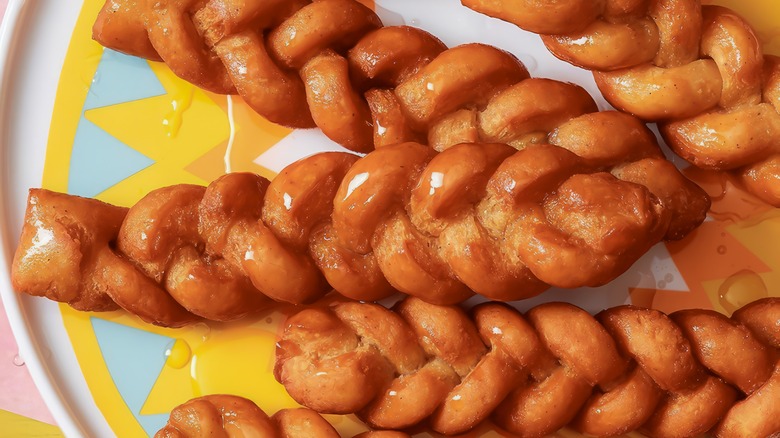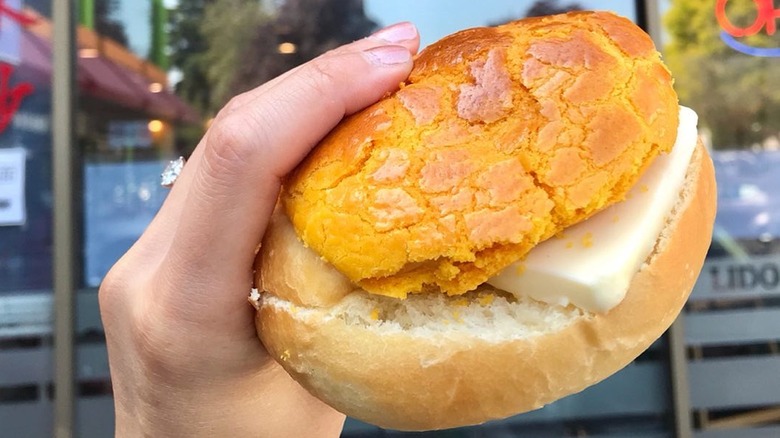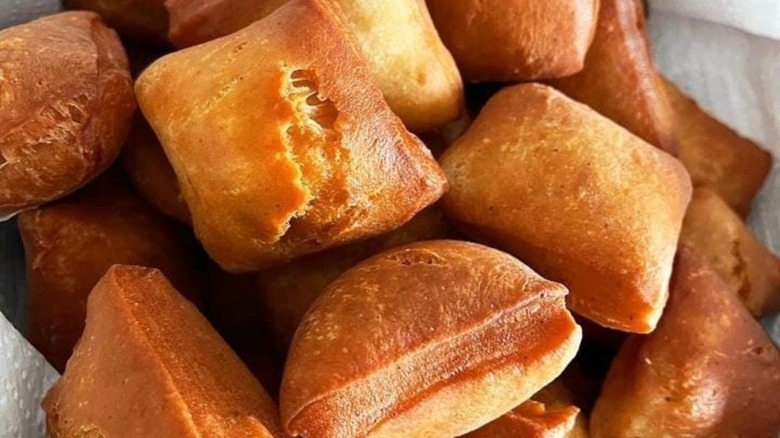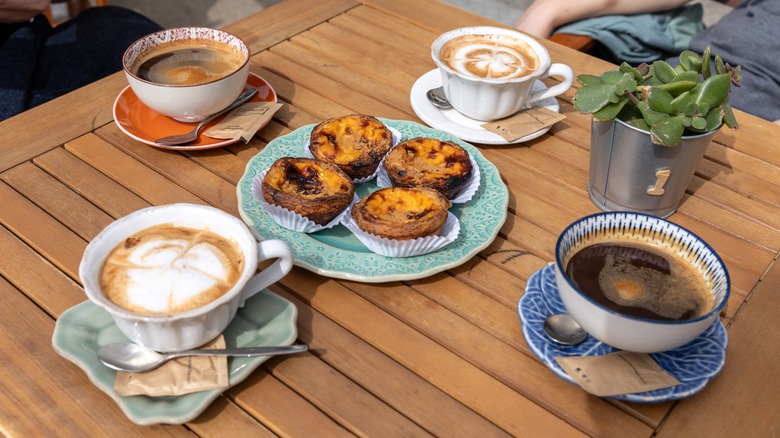22 Delicious Breakfast Pastries From Around The World
We may receive a commission on purchases made from links.
Whether or not you stand by the notion that breakfast is the most important meal of the day, it's hard to argue that having a pastry in the morning makes your day a little brighter. Around the world, different cuisines have embraced a wide variety of morning meals, and breakfast pastries are a commonality. Some are sweet, others are savory, and all are a delicious way to energize you for the day. If you're used to downing a plate of bacon and eggs in the morning, step outside the box and consider a handheld pastry to set yourself on the right foot.
We've collected a selection of breakfast pastries from around the world to inspire your taste buds first thing in the morning. With regional ingredients and unique preparations, these pastries have their own twist. Whether you try to whip up a recipe yourself, seek out a specialty bakery in your city, or arrange your future travel plans around these treats, you'll definitely want to dive in and taste the selection.
1. Sfogliatelle — Italy
Italian cuisine might be well known for its pasta and pizza dishes, but the morning meal revolves around a light pastry and coffee. One popular example is sfogliatelle — flaky pastries originally from Naples, made with multiple layers of paper-thin dough spread into a triangular shape like a lobster tail and dusted with powdered sugar. The pastry is typically stuffed with a filling created with ricotta, semolina, and candied orange or lemon zest. The contrast between the crunchy dough layers and the rich, creamy filling is an absolute treat to bite into.
Sfogliatelle were possibly invented in a monastery in the 1600s, though it took a couple of centuries before the recipe was perfected to its current state.
2. Pain au chocolat — France
French pastries are in a category of their own, with endless viennoiseries and assorted options to satisfy your appetite. One of them is pain au chocolat, also called chocolatine —the perfect sweet treat to accompany your morning cup of coffee. Pain au chocolat consists of puff pastry yeast dough shaped into a pocket and wrapped around a stick of chocolate, then baked with an egg wash.
French bakeries pop them out fresh every day, displaying the buttery, golden pastry straight out of the oven. You're best off picking one up from a bakery, as the process of making at home involves almost a day of waiting while the dough rises. Enjoy it warm so the chocolate is slightly melted inside, making for a luxurious blend of flavors.
3. Croissants — France
French croissants have taken over the world with their buttery layers of laminated yeast dough. They're the epitome of French breakfast pastries and have inspired copycats at every turn. However, there's nothing like a warm, flaky croissant from a French bakery. Making your own is a lesson in patience, so if you want to skip the hassle, let the professionals do the hard work.
Dipped into a café au lait or hot chocolate, the buttery pastry shines with unabashed glory. While purists stick to eating it solo, it's also common to enjoy it with jam or salted butter. For a more filling meal, serve your croissant as a sandwich with sliced ham and cheese or your favorite fixings.
4. Donuts — U.S.
With over 10 billion donuts made across the country yearly and a National Donut Day on June 2, donuts are ubiquitous treats in the U.S., often paired with coffee for breakfast or as a mid-morning snack. Glazed, cream-filled, or dipped in chocolate with sprinkles, there are infinite flavors to choose from. As for the dough itself, you'll find yeast and cake donut lovers each avidly praising their favorite.
Although donuts have become synonymous with American pastry culture, it was Dutch settlers who first brought the treat to the U.S. But they didn't become popular until volunteers fed American soldiers the sweet doughs during World War I in France. The donut and coffee combo only rose in popularity after the Second World War, when shops serving the two expanded to serve customers day and night.
5. Kardemummabullar — Sweden
Cinnamon buns are a decadent pastry that's perfect for a weekend morning or lazy brunch, but if you're looking for a slightly lighter variation with a twist, Sweden has the answer. Cardamom buns (kardemummabullar) are spiced baked pastries made with yeast dough.
Instead of a spiral with layers of cinnamon and butter, the dough is braided into a knot with a brown sugar, butter, and cardamom filling that adds richness to every layer. Cardamom has been used in Sweden since the Middle Ages, and its warm aromatic notes make for a welcome variation for cinnamon bun lovers. The spiced buns are so popular they are honored with a yearly celebration on May 15.
6. Babka — Eastern Europe
While some pastries have a specific origin story, others are more convoluted and stem from various cultures. Take babka, a marble bread that is equally relevant to Jewish cuisine as other Eastern European ones. You'll find babkas baked in loaf pans and others made in bundt pans.
Jewish variations are traditionally crafted using leftover challah dough and rolled into a swirled dough with fillings like chocolate, cinnamon, or jam. Meanwhile, other Eastern European recipes call for a sweetened egg yeast dough. In Poland, babkas are typically served for Easter, soaked with rum syrup. Depending on the version, prepare for a decidedly sweet breakfast pastry, the perfect complement to a cup of coffee.
7. Brioche — France
The brioche has been around for centuries and is even believed to have been the object of Marie Antoinette's famous utterance, "Let them eat cake." The pastry has spawned a whole range of variations, from brioche buns to pillowy loaves with flavorful add-ins.
Butter is fundamental to all brioche recipes (sometimes at a one-to-two ratio with flour), typically consisting of a yeast dough with eggs, milk, and sugar for subtle sweetness. The dough can be balled up and layered into a loaf pan, spread into a wreath, or baked in a muffin tin with an extra ball of dough on top. Sugar crystals sprinkled on or a smear of jam rounds out this delicious pastry.
8. Pan dulce — Mexico
Directly translated as sweet bread, Mexican pan dulce is a delicious pastry to start your day. Also known as conchas, the sweet doughy rounds feature a scored surface that looks like a seashell and gives the exterior a crispy texture thanks to extra sugar. The buttery baked pan dulce is similar to French brioche, yet with its own twist.
The pastries come in an assortment of flavors like vanilla, cinnamon, or chocolate, as well as with various fillings such as cream and fruit jams. Others have no filling and are cut in half and spread with butter or jam. Some pan dulce contains a couple of drops of food dye to give the dough a colorful hue, while others appear plainer.
9. Pastelitos — Cuba
If you can't pick between a sweet or savory breakfast, Cuban pastelitos are the answer. The flaky pastries feature a winning combination of cream cheese and guava paste, bringing together all the flavors you'd want in your morning meal.
Typical in Cuba and neighboring Latin American and Caribbean countries, the puff pastry goods are easy to make and freeze in advance to reheat when a craving strikes. The sweet and tangy treat is equally delicious with orange juice for your first meal of the day or as a mid-afternoon snack or post-meal dessert. You'll find pastelitos with assorted fillings, too, but the cream cheese and guava variation is the perfect breakfast treat.
10. Cornetto — Italy
For another sweet Italian pastry that's sure to whet your appetite for all the pasta to come, the cornetto is a great pairing for a cappuccino. Inspired by a crescent-shaped pastry from Vienna called a kipfel, the cornetto is thought to have been introduced to Italy in the late 1600s, when Venice and Vienna were engaged in trade.
The Italian breakfast pastry uses simple ingredients like flour, milk, egg, sugar, butter, and yeast. The dough is shaped into a crescent (not unlike a croissant) and baked either with or without a filling. You'll find variations with vanilla or chocolate cream, custard, Nutella, and apricot jam or marmalade.
11. Ensaymadas — Philippines/Spain
You might not think there's much overlap between Southeast Asian and Spanish cuisine, but ensaymada is the Filipino breakfast staple that bridges the gap. Originally from the Mediterranean island of Mallorca, where Mallorcan Jews made the breakfast pastries, the pastry probably found its way to the Philippines during the centuries of Spanish colonization.
Ensaymadas are comparable to brioche but feature more egg yolks and butter (previously pork lard or olive oil), infusing an added richness and thinly crisped, layered goodness to every bite. The dough is typically coiled and baked with grated cheese or served with powdered sugar, the latter being the Mallorcan way. You'll also find plenty of other add-ins like nuts, ham, and Nutella.
12. Facturas — Argentina
In Argentina, facturas are a category of pastry that includes an assortment of treats. While most are comprised of a buttery delicate puff pastry, others consist of a denser dough. You'll find facturas for breakfast, light meals, and dessert, as the multitude of options and regional variations make it hard to get bored of.
Among the wide variety, medialunas (Argentina's answer to croissants) are one popular choice, loaded with butter and baked into a crescent shape. Cañoncitos are cylindrical tubes filled with dulce de leche or pastry cream, and small donut-like treats called bolas de fraile follow a similar fillings formula. For something sweet but less rich, quince paste is a common add-in for flaky dough or shortbread cookies.
13. Churros — Spain
Churros are one of many reasons to visit Spain, and if you have access to them locally or are motivated to make them from scratch, you'll understand why. The churro treats consist of pastry dough piped into thin tubes, fried, and rolled in sugar. While thicker variations also exist, the thinner ones offer an optimal contrast between the tender interior and crunchy ridged shell.
Churros are traditionally served with a cup of melted dark chocolate for dipping. If that's not motivation to wake up in the morning, the combo pairs well with coffee, too. Although Spain lays claim to the origin of churros, pointing to its ease of preparation for shepherds, other countries like Portugal and China were probably involved in its inception.
14. Eccles cake — England
England is no stranger to delicious breakfast pastries, and Eccles cake is a fine example consisting of puff pastry discs filled with stewed spiced currants, making every bite a feast for the senses. With warming spices like cinnamon, nutmeg, allspice, ginger, cloves, and citrus zest or peel, these pastries are perfect year-round but especially suitable for the winter months.
The surface is typically brushed with an egg wash and sprinkled with sugar, giving Eccles cakes a glossy golden sheen that makes them all the more tempting. Originally made in the town of Eccles for religious festivities, the treats were almost banned due to Puritanism in the 16th century, but their legacy persevered.
15. Wienerbrod — Denmark
If you amass all danishes into a single category, you'll miss the nuances of the treat. In Denmark, the flaky laminated dough pastries go by Wienerbrod, which translates to Viennese bread, because they were introduced by Austrian bakers in the 1800s. Locally, you'll always find sweet versions, though variations with cheese are also common abroad.
The pastry dough typically contains eggs, yeast, and plenty of butter, and it's filled with custard, jam, or cream, as well as garnishes like sugar and nuts. There are plenty of regional variations to the sweet fillings as well as the format of the pastries. Some have a well in the center for the filling, while others are rolled along with the extra ingredients.
16. Crumpets — England
Seemingly straight out of a fairytale book, crumpets are a light and airy bread to enjoy in the morning. The batter is made of milk, butter, yeast, a pinch of salt and sugar, and baking powder. Then, it's cooked in a frying pan in crumpet rings, which hold the batter into a rounded shape as it cooks.
As the crumpets cook, a reaction between several ingredients produces small holes in the surface, giving them their characteristic look. Served with a pat of butter, marmalade, or your favorite jam, it's easy to elevate the fluffy bites. Layer on sweet and savory sandwich ingredients to transform your crumpets into the breakfast of your dreams.
17. Mantou — China
If you're not much of a fan of crumbly, buttery pastries first thing in the morning, you might want to try Chinese mantou. A popular feature at dim sum meals, mantou are basically steamed buns that can be enjoyed warm out of the steamer or deep-fried until golden and served with sweetened condensed milk for dipping.
The dough components can vary but typically include flour, yeast, milk, water, and a bit of sugar. Once the dough is formed and shaped into rounds, it proofs first before steaming, ensuring a delightfully pillowy result. Mantou can be eaten plain or cut in half and layered with ingredients like fried eggs, braised beef, sausage, or cheese.
18. Macheteadas — Honduras
Fried dough comes in many forms around the world, and in Honduras, you'll find macheteadas. The name derives from the word "machete," as the tool was used to cut the pastry at one time. The simple dough consists of flour, water, and sugar shaped into a disc with a few slits on the surface. It is then deep-fried in oil.
Served with honey, powdered sugar, or a drizzle of sweetened condensed milk, these pastries infuse just the right touch of decadence to start your day. Alternatively, macheteadas make a great base for crumbled cheese or sour cream. You'll find the fried dough pastry on the breakfast table or as a popular street food option in Honduras.
19. Koeksisters — South Africa
Tasty fried dough wins again with South African koeksisters, and the sticky, syrupy pastries come in two main variations. One is an Afrikaans version made with flour, then braided, fried, and served with ginger syrup. The other is from Cape Malay culture, crafted with a sweet potato and flour dough seasoned with warm spices like cinnamon, aniseed, nutmeg, ginger, and cardamom. They are oval-shaved, fried, and served with cinnamon syrup and shredded coconut. Other toppings like crushed nuts and chocolate are also popular.
Both versions boast a delicious contrast of crispy fried exteriors and fluffy dough interiors, complete with a sticky glaze to round it out. Paired with a hot cup of coffee, koeksisters undeniably give donuts a run for their money.
20. Boh loh yau — Hong Kong
You'd be forgiven for thinking that boh loh bao, also known as pineapple bun from Hong Kong, contains pineapple. As it turns out, the name boh loh bao just refers to the appearance, as the crumbled topping gracing the surface of the buns resembles the rough texture of pineapple skin.
The bun itself consists of a milk, egg, and flour-based dough that's mildly sweetened. Meanwhile, the topping is created with butter, egg, sugar, and custard powder, sliced into a disc, and draped over the bun to bake. The result is a crackly shell paired with a fluffy bun. A boh loh bao becomes a boh loh yau when a slab of butter is placed in the center of the bun after it's baked. The contrast in texture is further enhanced by the pat of cold butter. Try it with a cup of Hong Kong milk tea.
21. Mandazi — Burundi/East Africa
Several countries in East Africa, notably Burundi, serve mandazi for breakfast. The recipe for the fried, pillowy mandazi pastries was created by local village women who came up with it using the minimal ingredients they had on hand, at a time when bread or bakeries weren't readily available.
Typically, mandazi dough is fashioned out of flour, egg, yeast, milk powder, sugar, butter, vanilla, and cardamom. The dough is cut into diamond shapes and fried until it puffs up. Regional variations tweak a few aspects of the recipe, such as serving the fried pastries with syrup. Mandazi are best enjoyed hot with a cup of cardamom tea to bring out the aromatic notes in the dough.
22. Pastéis de nata — Portugal
Pastéis de nata are a unique variation of egg tarts commonly served for breakfast or as a sweet snack accompanied by coffee. Originally from the port town of Belém in the 1800s (and possibly invented by nuns in a nearby convent), they've since become popular in other areas of the country.
Pastel de nata features a shell of layered flaky puff pastry filled with a creamy egg yolk-heavy custard flavored with lemon zest and cinnamon. The treats are baked until the shell is crisp and caramelized and the custard set and browned. The experience of biting into the delicate tarts offers a delicious distinction between the sweet rich filling and subtly salty puff pastry.
